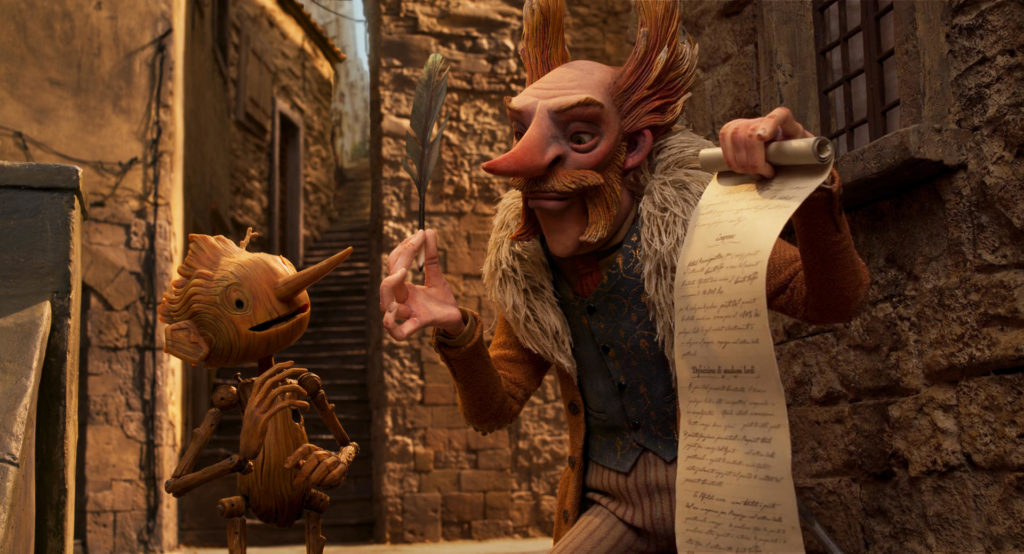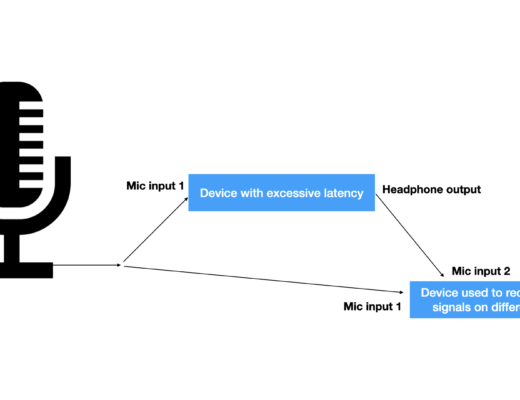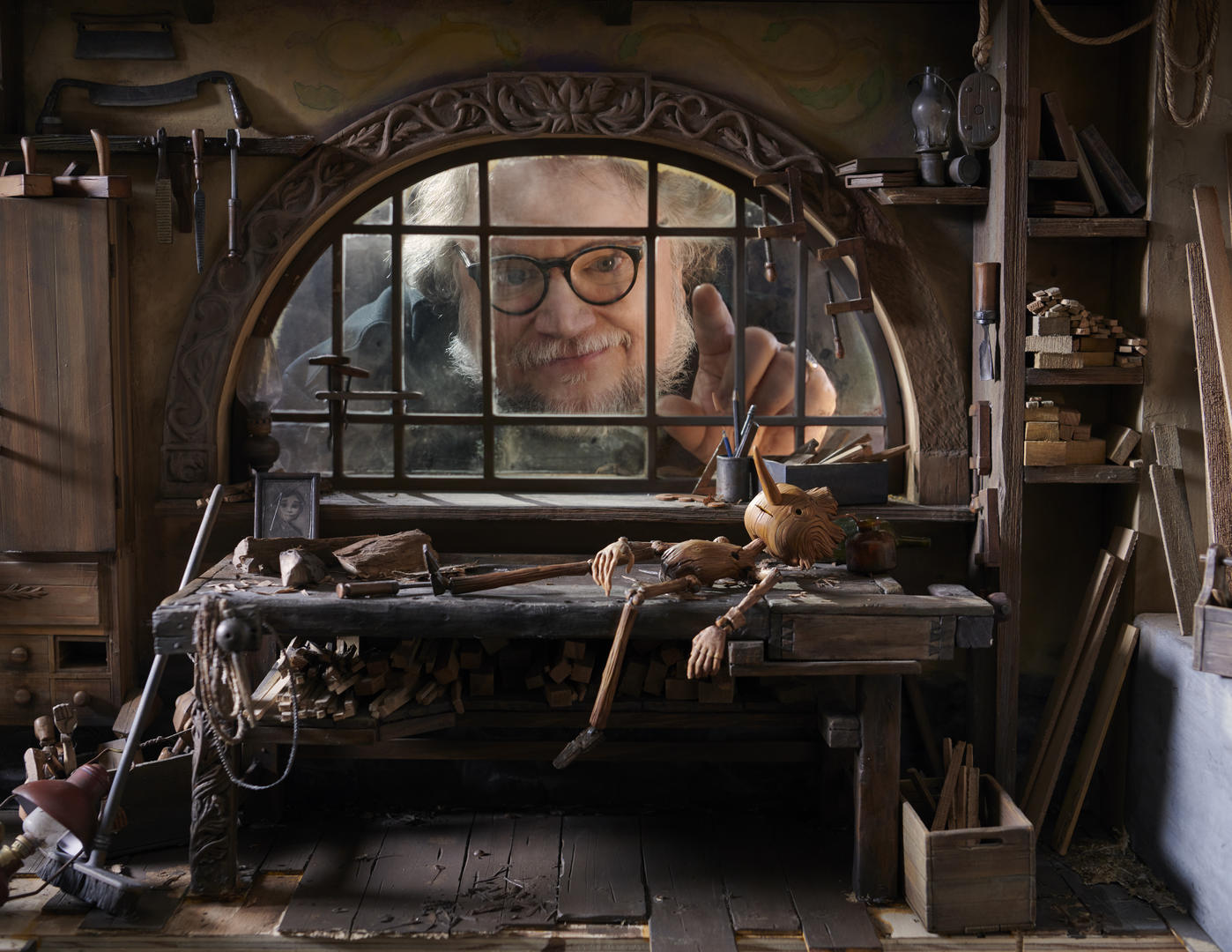
Guillermo del Toro is a filmmaker who is always seeking unique ways to tell stories. His latest venture, in collaboration with animator Mark Gustafson, is a stop-motion version of the beloved classic story of Pinocchio. Of course, in the custody of Guillermo del Toro, the story is pushed beyond the saccharine sweet story we remember from long ago, into a multi-faceted adventure of love and loss. As Guillermo has said about this film, other versions of the story are about obedience, his version is about disobedience.
The detail and craftsmanship in the frame-by-frame, stop motion images, is equaled by the artists creating the soundtrack. I had the rare opportunity to watch Guillermo working with his sound team on Pinocchio at Universal Studio’s famed Hitchcock Mixing Stage. That fabled room has been transformed into a state-of-the-art Dolby Atmos theatre, helmed by acclaimed Rerecording Mixers Jon Taylor and Frank Montaño.
Before I was brought in to watch these award-winning filmmakers work their magic through reel 3 of the film, we sat down for a fascinating conversation. Along with mixers Jon and Frankie, Supervising Sound Designer Scott Martin Gershin joined us as we talked about working with Guillermo del Toro and the intense and detailed process of creating the sound for this unique film.
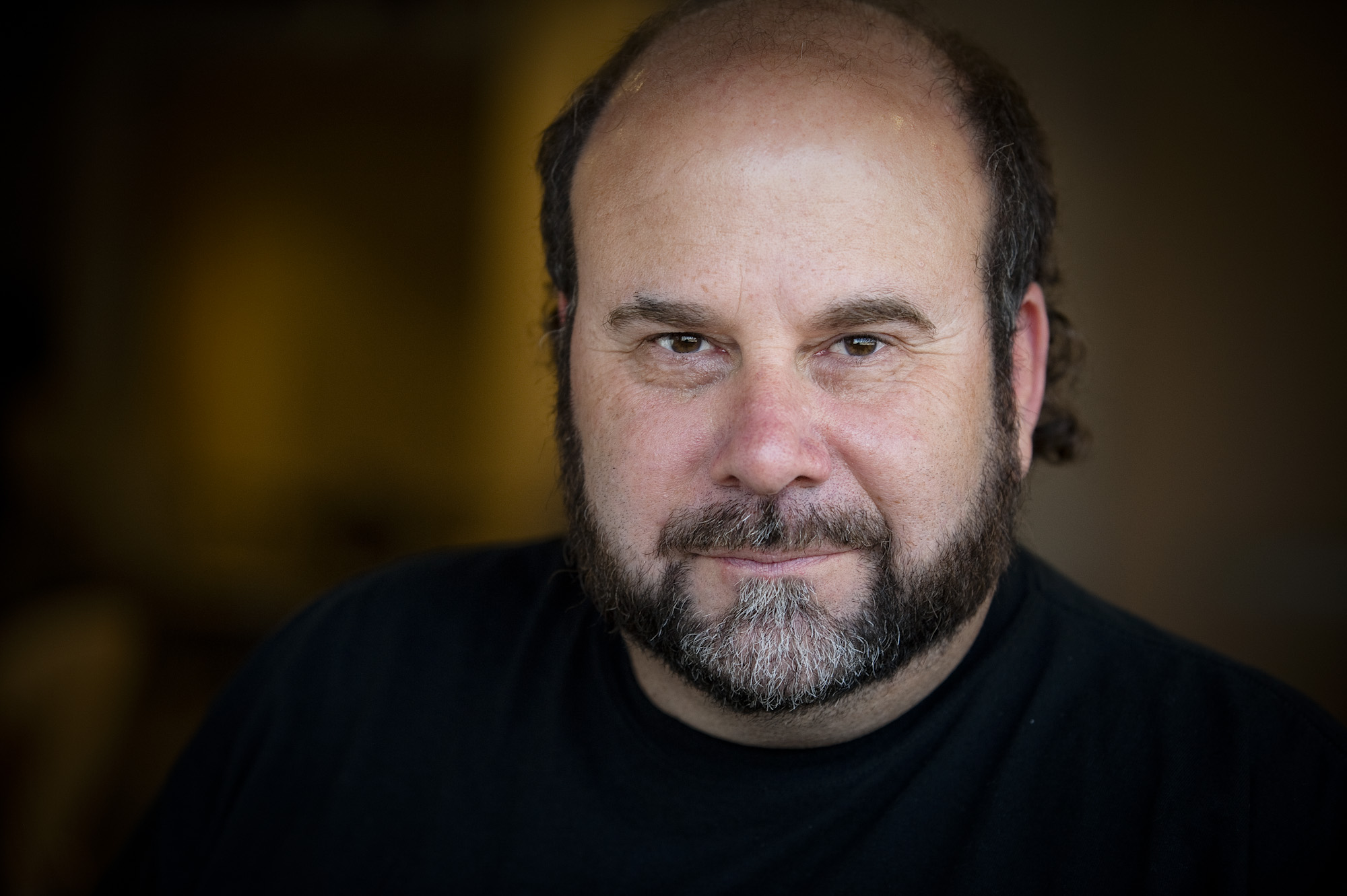
Scott Martin Gershin: I’ve done a lot of Disney shows and I was a big kid for Disney shows. With Disney shows adults watch it – they see one film, kids see it – they see another film. This film is one of those few films that has that. There’s a depth of story in this, well it’s Guillermo!, [laughs] its dark, and it’s complicated, and there’s a maturity to what’s going on. It has a maturity to it that I think audiences will really respond to, a complexity, a little darkness without going too far.
Frank Montaño: Most of the time, a film is tailored to the marketplace. It’s an action picture. It’s a drama. It’s a comedy. This is not that kind of thing. This has a very wide gamut – it’s emotional, it’s exhilarating, it’s scary. It’s a musical! It has all these characters that are coming together that we’re not used to, you know, all the manipulation that is happening – the love and loss. It is very interesting that way emotionally.
SMG: What I also like about this story, it’s also about innocence. There’s a little song that goes – what’s this and what’s that, and what’s that, and what’s that? He’s a little kid with thousands of questions. What’s that? What’s that like?
Guillermo and Mark show the creation of innocence, and then how innocence is exposed to the world, and how the world affects innocence, and the corruption of innocence, and the dissolution of innocence. It has this wonderful Pinocchio arc and the sound follows that, sort of does the same thing – it gets bigger and more complicated with the story.
Scott has worked with Guillermo Del Toro on some of his other films, in fact, all three of them have.
SMG: I’ve been working with Guillermo Del Toro for a really long time. Guillermo almost seems to have, kind of, two sides. He’s got the Pan’s Labyrinth, The Devil’s Backbone side, Devil’s Backbone is one my favorites. And then he’s got the Pacific Rim, Blade side.
I think this is one of the films to have both sides. He has the quiet, the quirky, at the beginning of the show, and then as the show goes on, we get Pacific Rim. So, he’s going to go big and small. The show is going to cross between two of the styles that he likes to do. And it’s so fun.
As Sound Designer, Scott came onto the project over a year ago, creating the sounds of the Pinocchio universe. Jon and Frankie however, have just started mixing the film, working through the reels as they come in from editorial. On a project that has no location audio, with the stop motion animations being updated and finalized by the day, the mixing stage is where the sound elements can finally begin to merge.
Then it becomes a matter of stripping away and finessing the moments, matching the sound to the images to best tell the story. Jon mixes both the dialog and the music, so he is handling the original voice-over recordings. He is also blending whatever additional dialog recordings Guillermo requires, now seeing the sound, music, and picture finally coming together.

JT: With dialog, the way I start, is always to make the characters feel like they’re planted in that spot. Wherever that is. That’s the easiest place. If you can imagine where they’re at and what it sounds like there, put that proper reverb, that proper space, that proper distance, that’s a good, solid, starting point.
In fact, one of the first things I said to Scott, was that this film is obviously about reverbs, reverb to fill the space. But it’s also about low end. How much chest do you put in for distance? You take the chest out – they’re farther away, put the chest in and they’re closer. And it’s about all of the elements put together. We did pre-dub the tracks. So, when I pre-dubbed it, the dialog was alone, I didn’t have any sound effects that were pre-dubbed from Frank.
SMG: Just recently, as you say, we’re putting it all together. Hearing it all together now, some frequencies mask other frequencies. And we didn’t have music before, and there’s a lot of tracks. [All laugh]
So, we’ve been experimenting with all of that, we’re evolving it, and really sculpting. And that’s where we are, inch by inch, second by second, carving, sculpting, and it’s fine sculpting, frame by frame. And Guillermo is never scared to change what he did.
We sort of have a bit of a shorthand, he says, “you know what I like, you know what I don’t like.” He likes me to run with it for a little bit, evolving ideas. As I start coming up with ideas and playing it for him, then we have conversations based on the ideas that I’m playing, and keep going and progress to a final.
He writes faster than anybody has ever seen. [They all laugh] And he goes, “Okay – that needs to go eight frames – take the strings down, flute over here – take that down – move that over here. Like four pages of it. So, we’ve been experimenting getting the first mix done.
JT: You’re putting the film together in your head, what your dynamics are, where space is available or not available. A lot of times you watch it, you sit on it for a while and take it in.
SMG: Jon is really giving the voice-over life. Which I think is just incredible.
Frank who is handling all of the effects talks about the spatial mixing involved in the film.
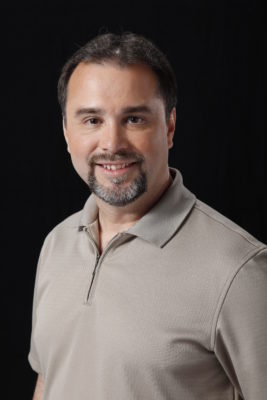
FM: There are different planes when we talk immersive audio. So, there’s your screen channels, your surround channels, and all the overheads. Everything’s kind of sharing surrounds appropriately, smaller spaces to larger spaces.
The dynamic panning is a lot of fun, it’s an extension of the surrounds, to carry that through the room sonically, so we take advantage of it when we can. And in this film, we start a little tighter and as we progress through the film, it widens and expands.
SMG: This is a consistent masterclass because we’ve got so many tools, and paintbrushes, and ways to manipulate sound in every way. Now, it’s deciding what we want to do. So, we’re really dynamically utilizing spatial techniques throughout the show.
JT: We make lots of little choices including with the dialog. You know, they’ve lived with most of these dialog readings for a long time. So, it’s pretty set. But now it’s – how much secondary voices do we need? The movement is so important. You don’t want to cover that up. It’s all a little bit of a jigsaw puzzle.
SMG: One thing I really like that you’ve been doing Jon – if you think about it – everything is created in a sterile environment. The people that do voices are doing voice-over. They did it three years ago and it’s not ever a performance against other performers.
So, what I love is you are making dynamics – where it goes up, it gets more tense, and it comes down – you’re building a lot of the volume performances into the acting.
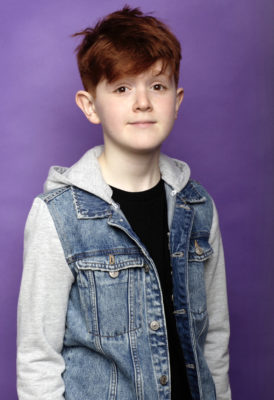
JT: The performances are crazy good.
SMG: And [Composer Alexandre] Desplat’s music is just wonderful. The actors are magical. They do an amazing job. I just think they nailed it. The one who plays Pinocchio – oh, wow. It’s gone on so long he aged out of his voice!
There’s magic in that actor. His performance really carries the love that you have for Pinocchio. He’s that good.
JT: The most amazing thing about this film to me, is it starts right off, out the gate – it moves – boom. Here’s the story. It goes through a lot of things very quickly, but you feel an emotional attachment to it fast. I mean, it’s like the first 7 minutes and you’re in.
And a lot of it is due to the acting. It’s so believable and real and you just fall for it.
Of course, stop motion animation, like all animation, needs to have every moment of the audio created from scratch. As Sound Designer, a major challenge for Scott was figuring out what sort of sound this wooden puppet makes.
SMG: Pinocchio is made of wood, Geppetto wears wood clogs, everyone’s wearing wood. There’s lots of wood in the show! [Laughs] And then you go in and you go [Scott starts mimicking a puppet, banging on the table] and then you have other puppets going [more banging] and everyone’s doing this [even more banging] and you’re like, oh – how do I give this a personality?
So, I have this crazy idea. I’d love to use guitar wood to help design this. There is this company called PRS Guitars. Paul gave me 50 pounds of wood. Curly maple, Brazilian rosewood, all the different types of guitar wood.
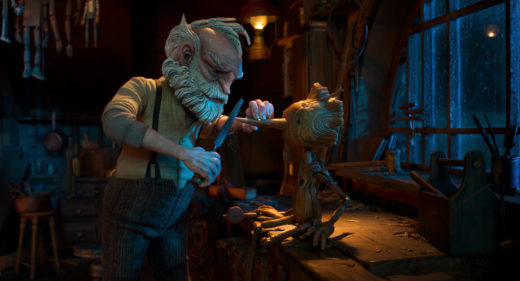
We brought in – you name it – Lincoln Logs. Anything that makes different timbres. He’s young and he’s a puppet, and it’s not like your normal Pinocchio. So we add squeaks.
Then at one point it was about pitches. I went to Jon’s house and we’re banging on wood. It really started ringing. So, we started cutting them up – half, half, half.
Then – oh, wait a minute! That sounds pretty good. That kind of gets – clacking. So, we started cutting it up. I had a big bag of wood and I just put it together, you know, and put strings on it and did all these crazy things to it.
At one point we did do puppets. Puppets sort of sound like bowling pins. That doesn’t work. That’s really heavy. So, you start off with what you think would work. You start off with the basics – like – we have a puppet, then it’s two puppets, and you hear it, and you go – I don’t like it.
We tried wind chimes; we’ve tried all these different things. We realized that, I think as we’re evolving in the mix, it’s not any one element. It’s a little squeak, and a little bit of wood to really shake it up.
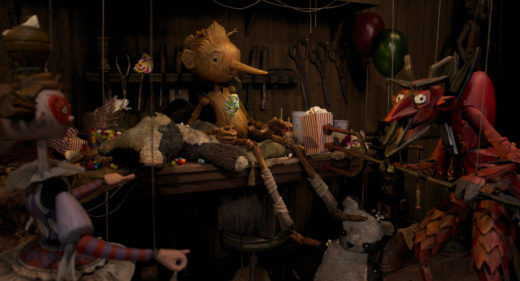
I think the concept, originally, with Pinocchio early on was – it’s jittery, it’s creaky, it’s squeaky. It looks like if you breathe on it, it would just fall over. Then little by little, as the show progresses, you start getting away from that personality. And now he starts becoming a thing – I’m going to say the word boy, it becomes a character who you really fall in love with.
He stops becoming foreign and alien and becomes more organic. There are a couple of areas where we go back and remind people, yes, he’s a puppet.
But the whole point is hoping that the audience eventually no longer sees him as a piece of wood.
This project for Guillermo, from start to finish, was a true labor of love and many years in the making. Oddly, this year, it becomes one of several Pinocchio adaptations to hit the market. But this is a Guillermo del Toro film, and with that comes a depth and a complexity unique to this multiple Academy Award winning filmmaker. As Scott said – audiences of any age will enjoy this unique telling of the classic tale, no matter what vantage point they interpret it from.
Pinocchio premieres at the BFI London Film Festival on October 15th, 2022 and opens in the US on December 9, 2022.
Woody Woodhall, CAS is a Supervising Sound Editor and Rerecording Mixer and Founder of Los Angeles Post Production Group. You can follow him on twitter at @Woody_Woodhall

Filmtools
Filmmakers go-to destination for pre-production, production & post production equipment!
Shop Now